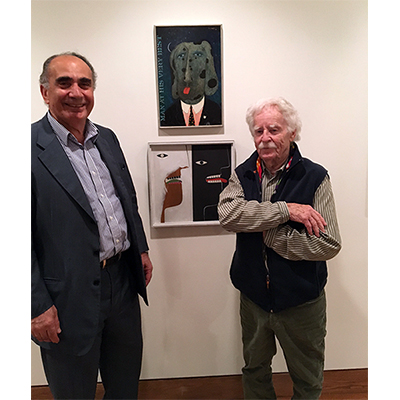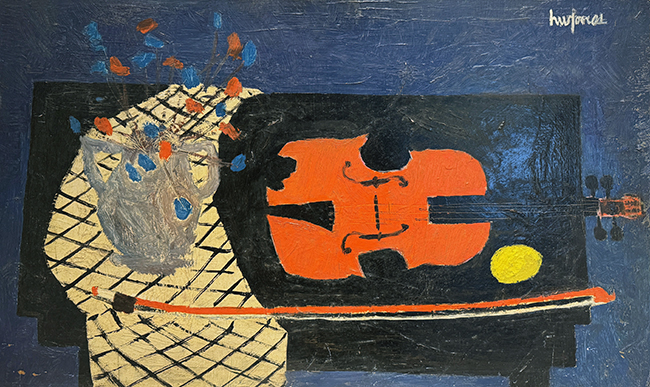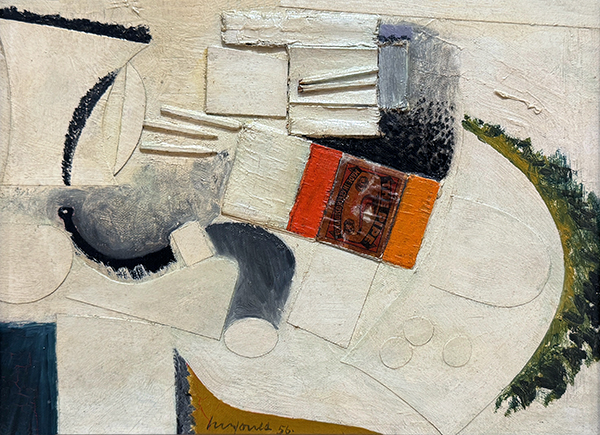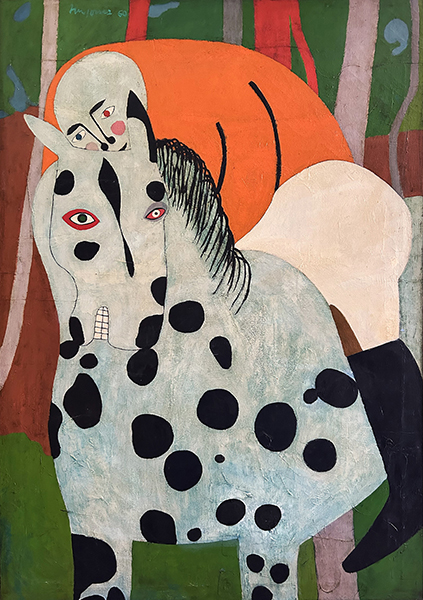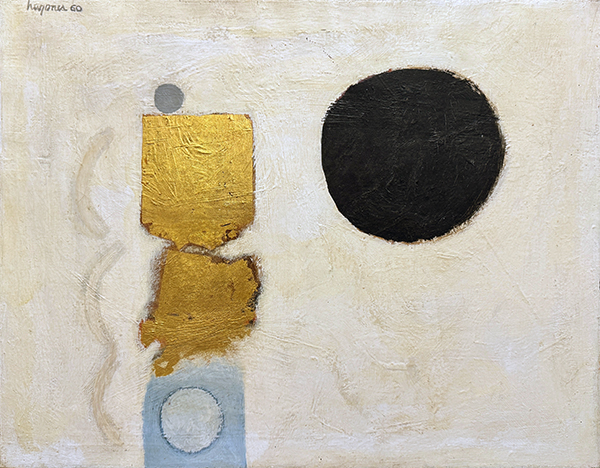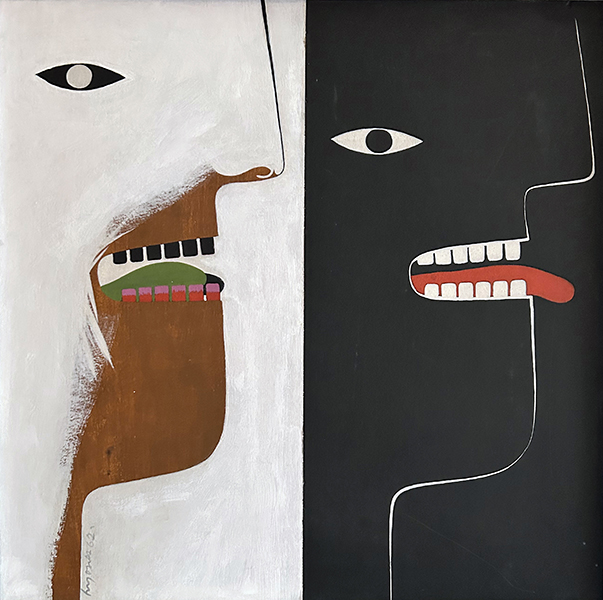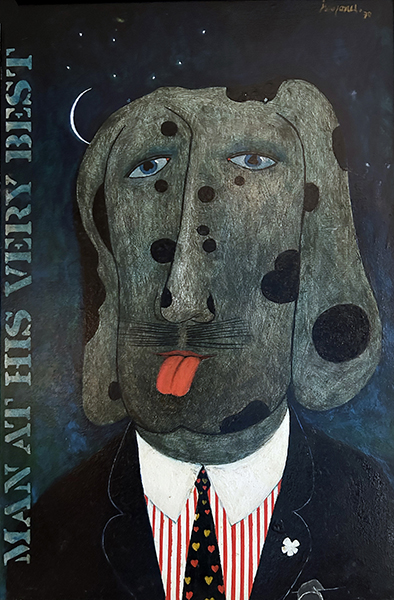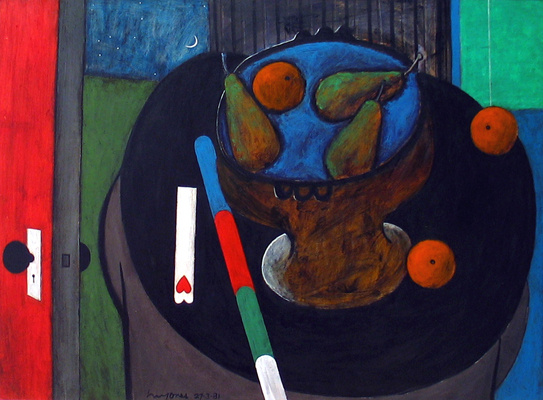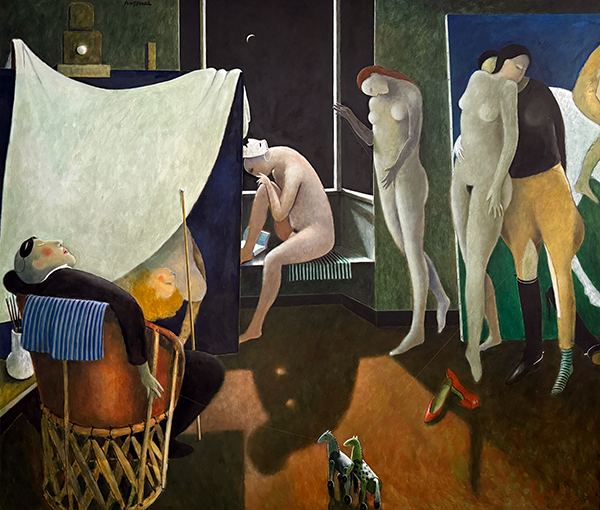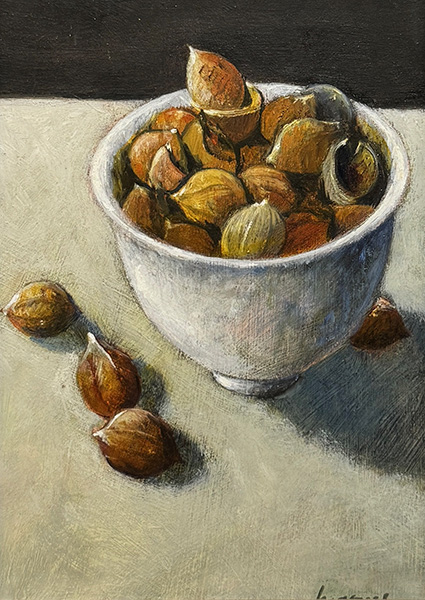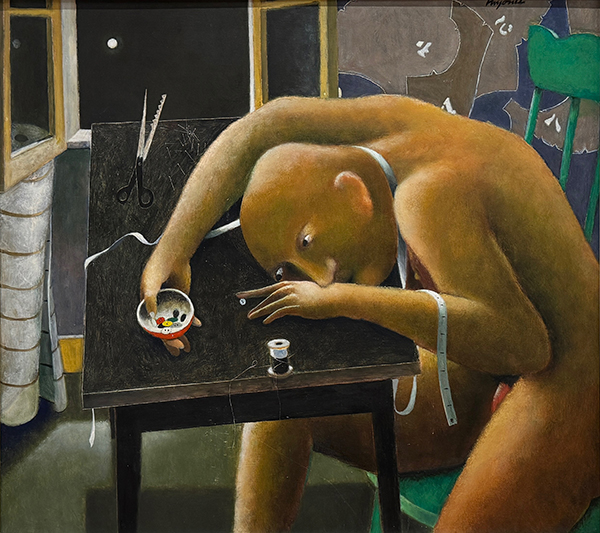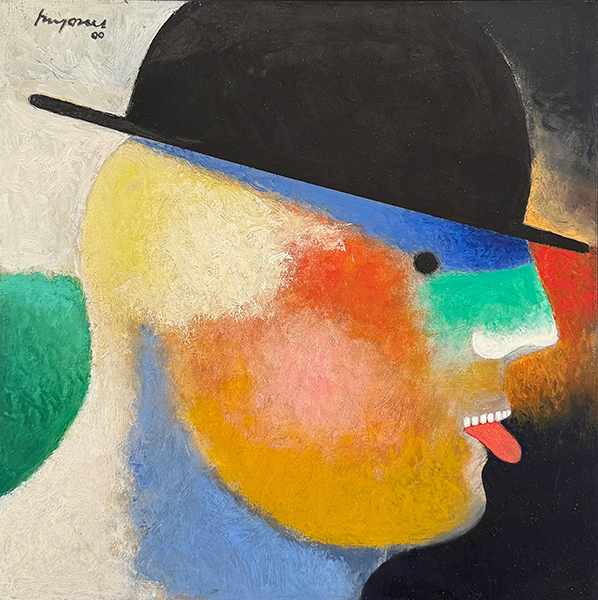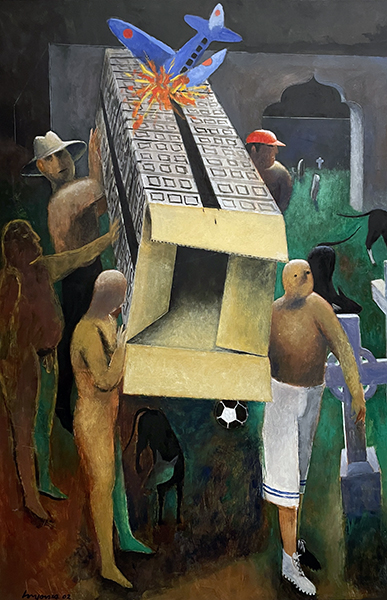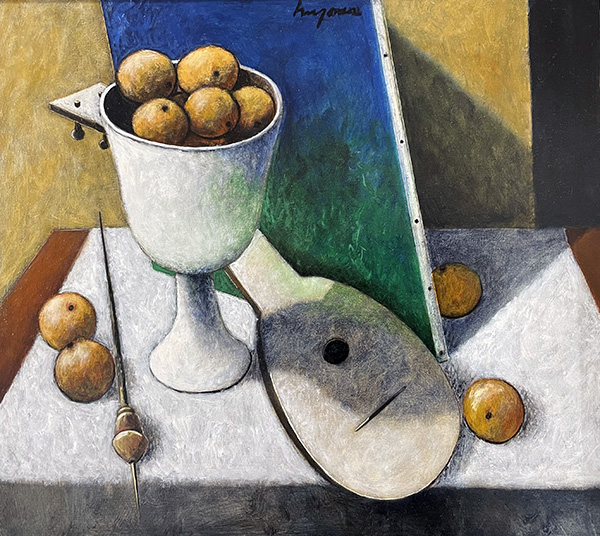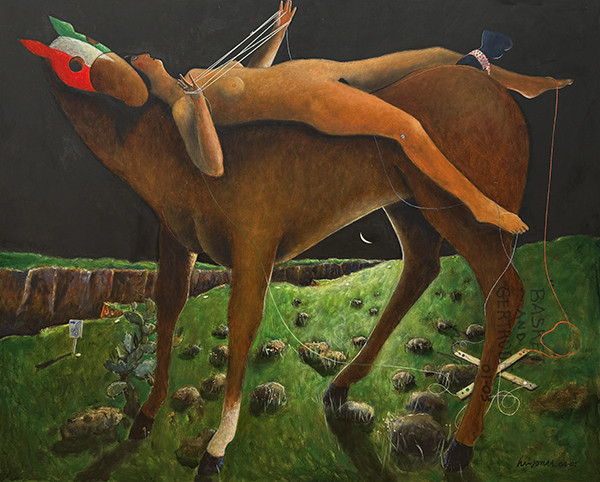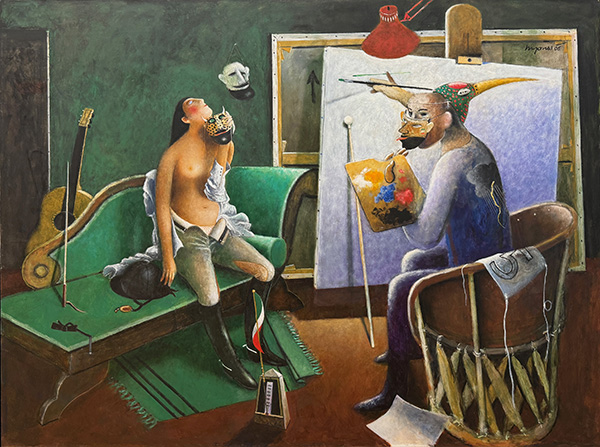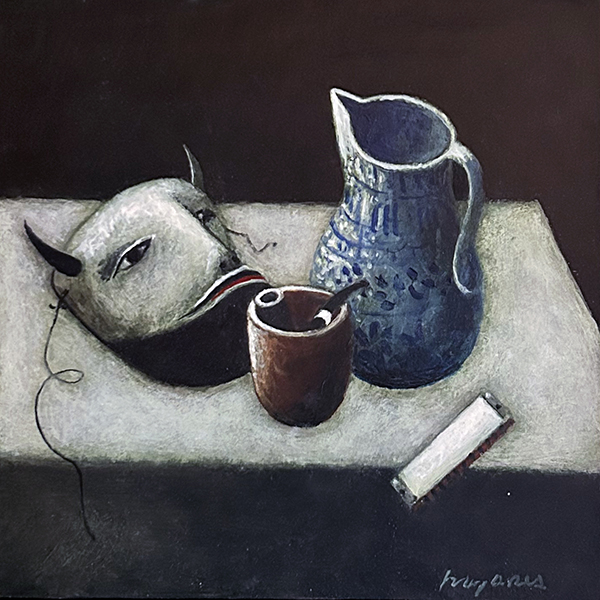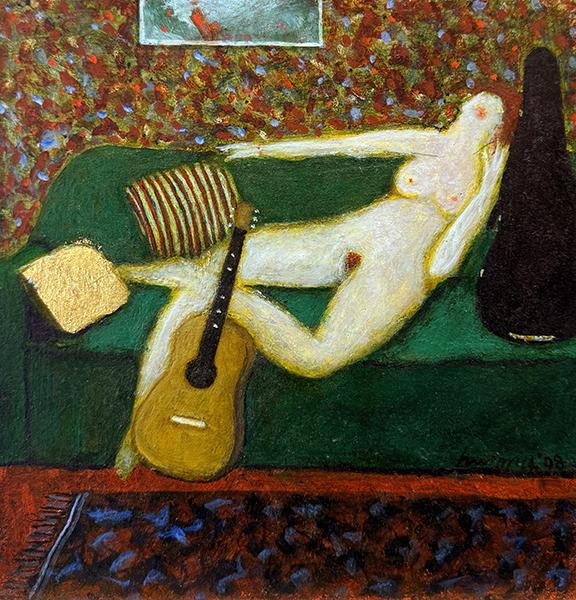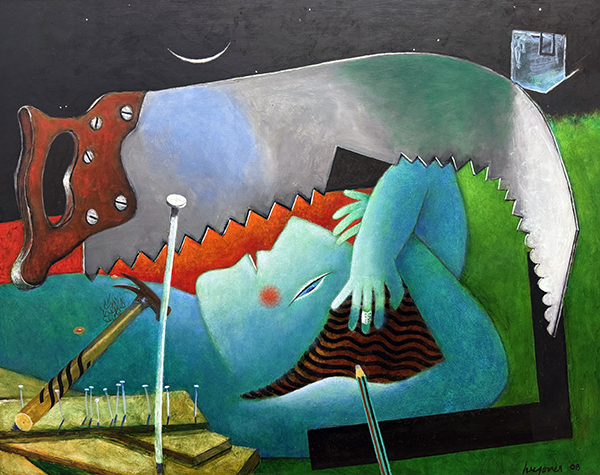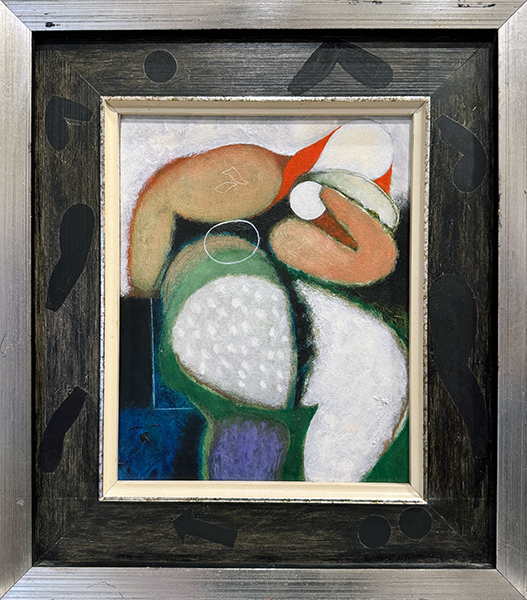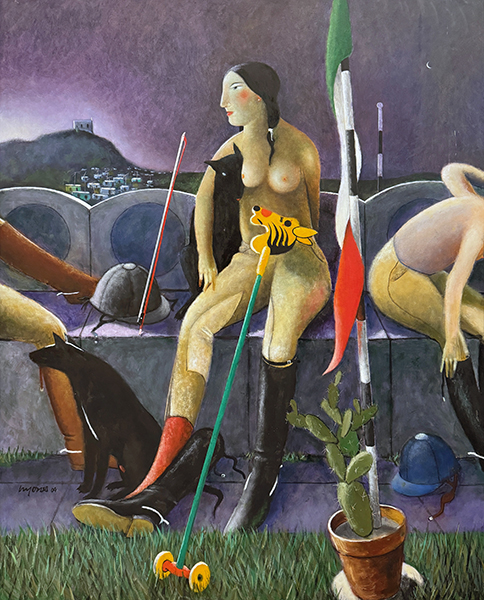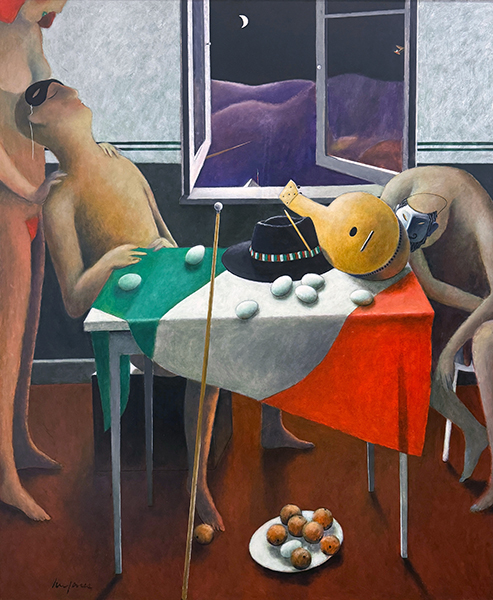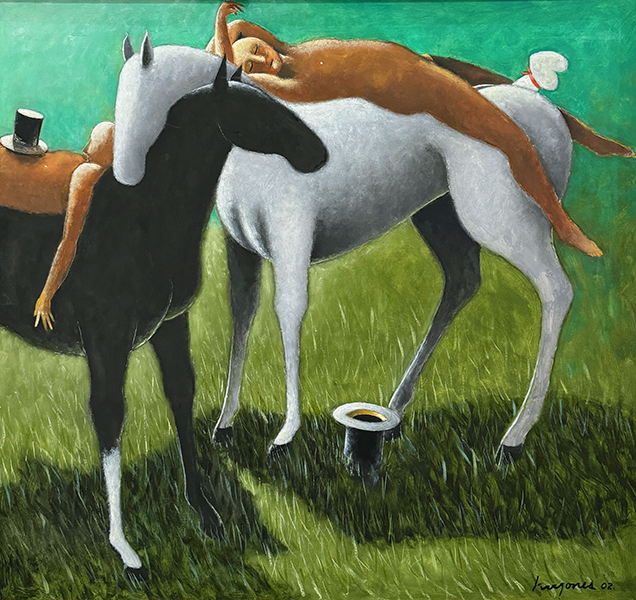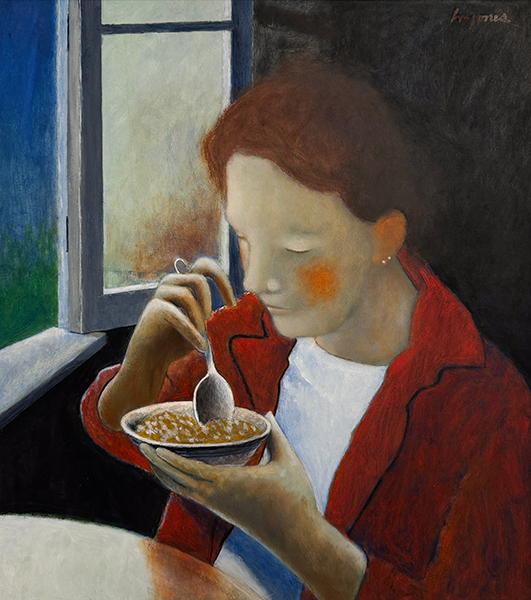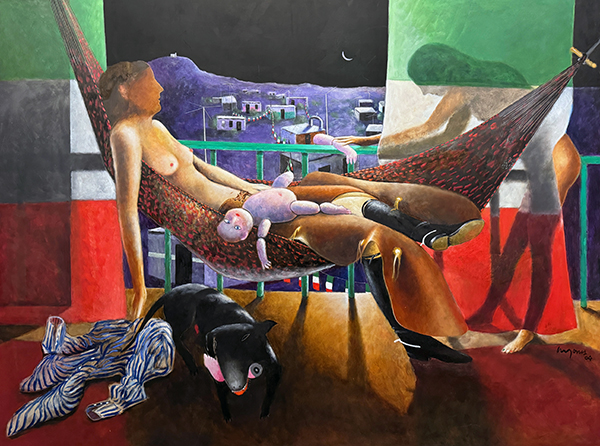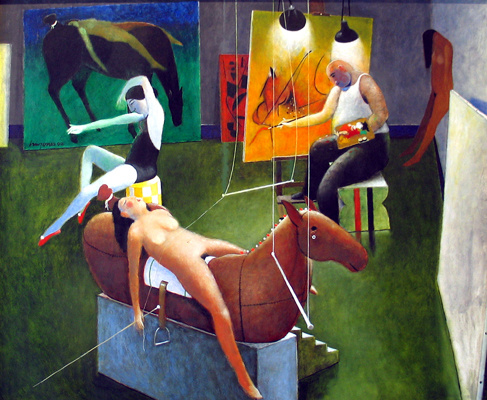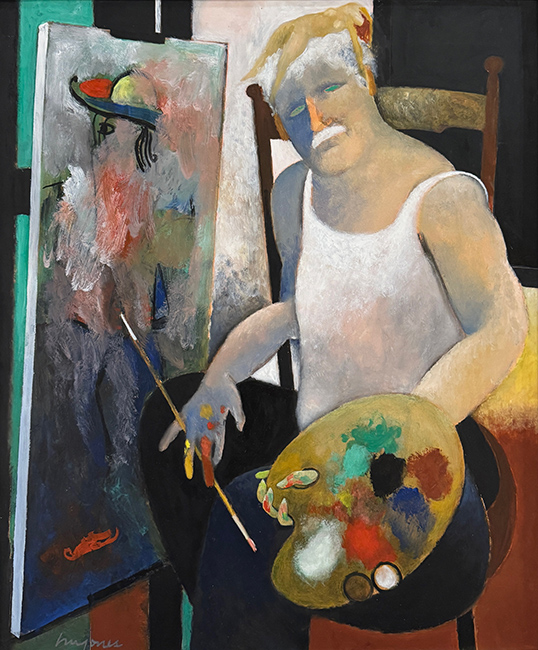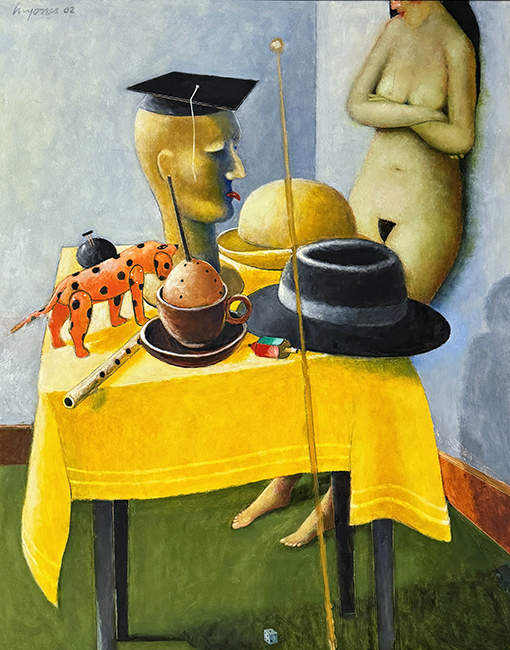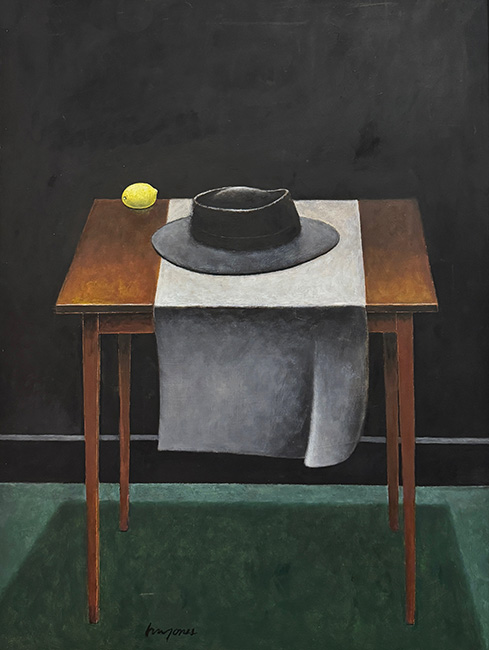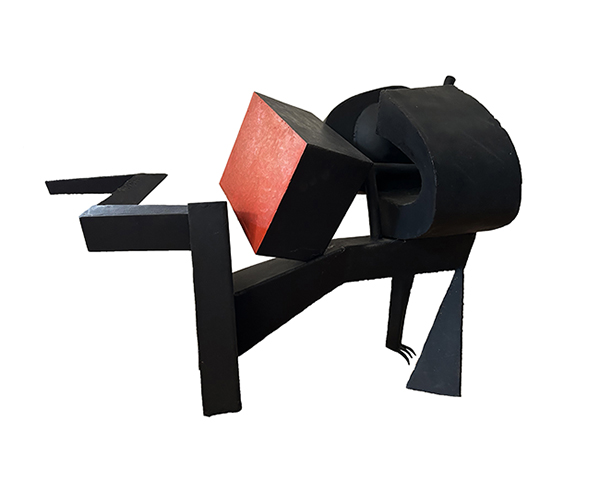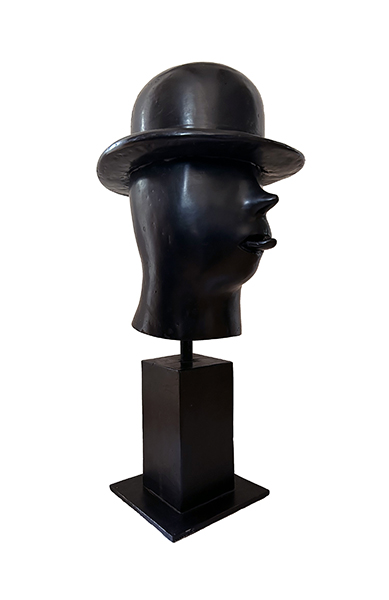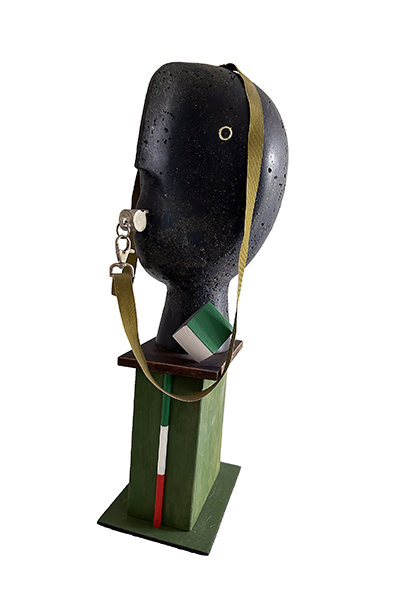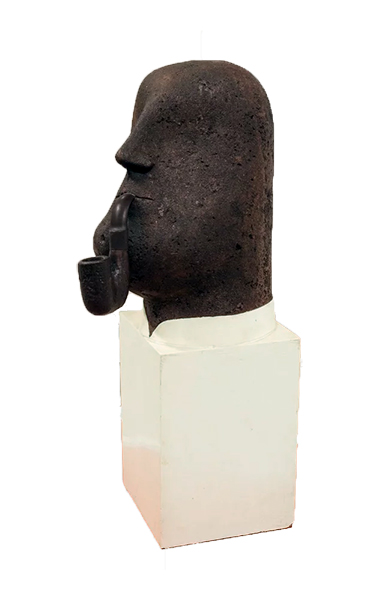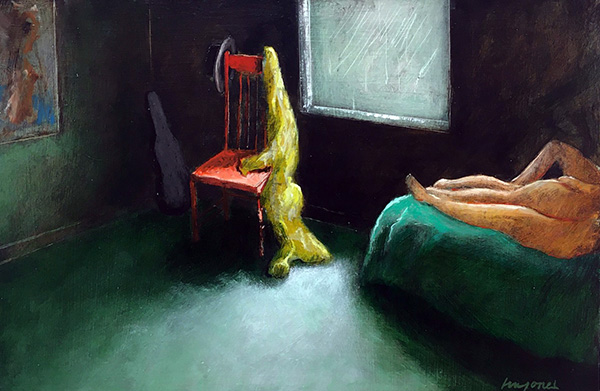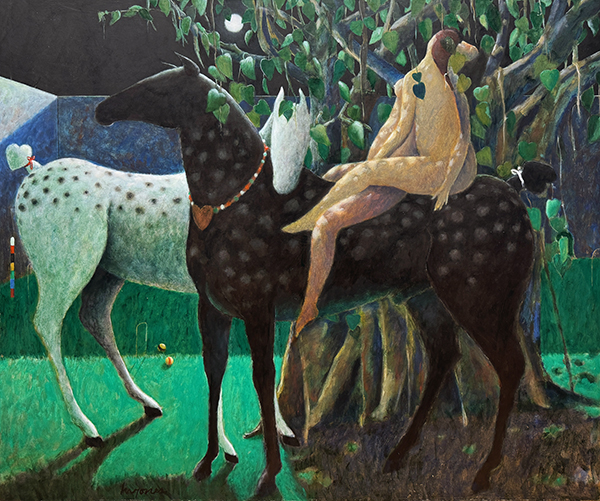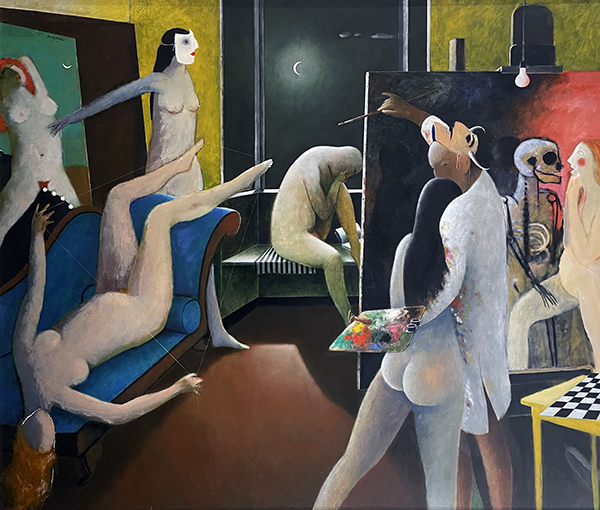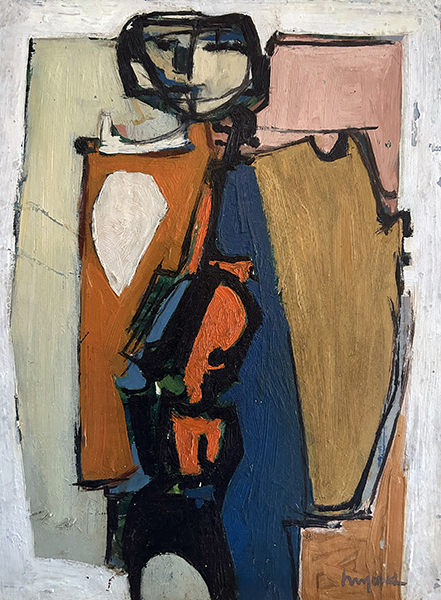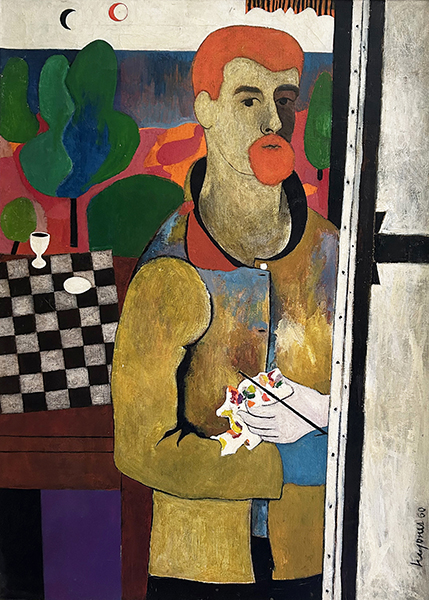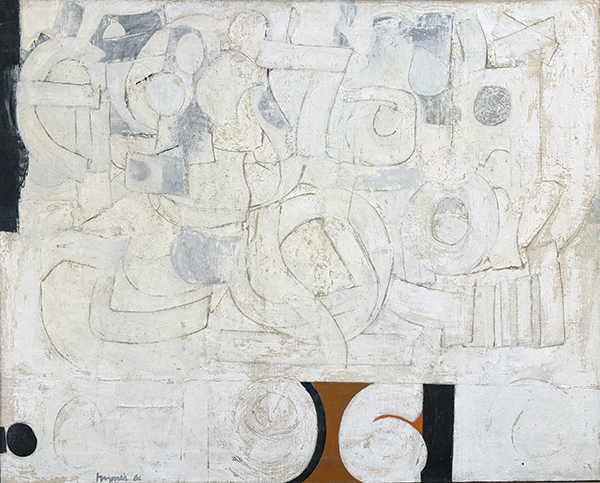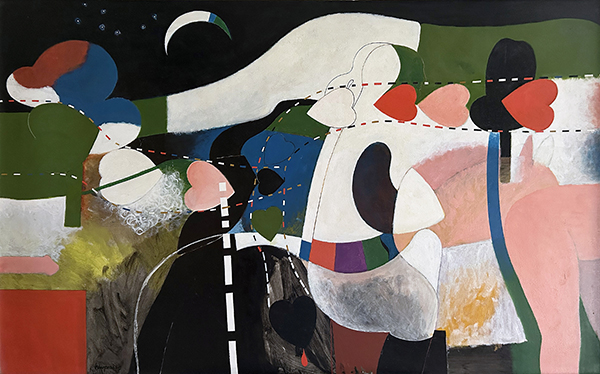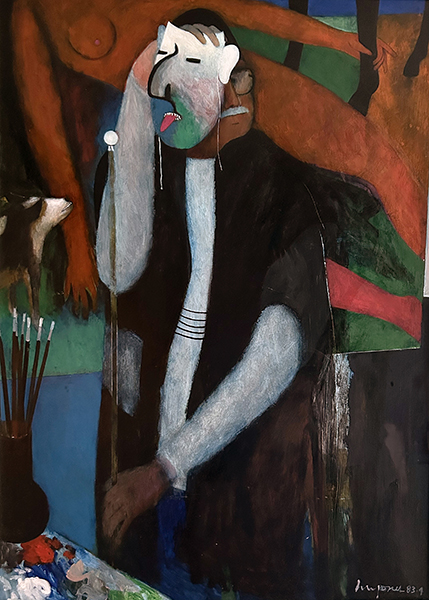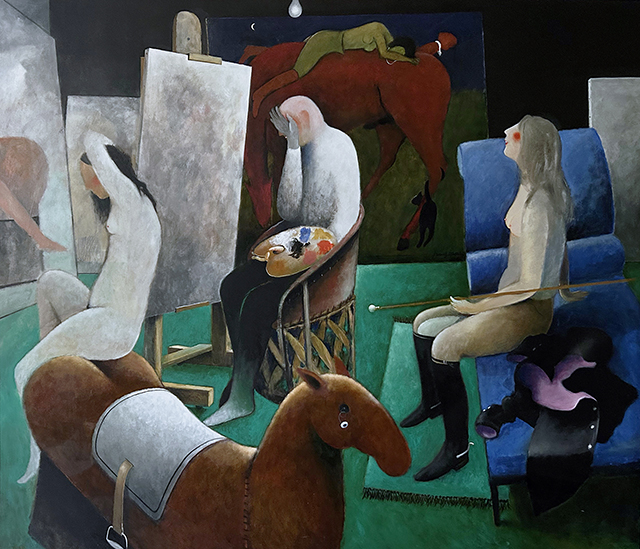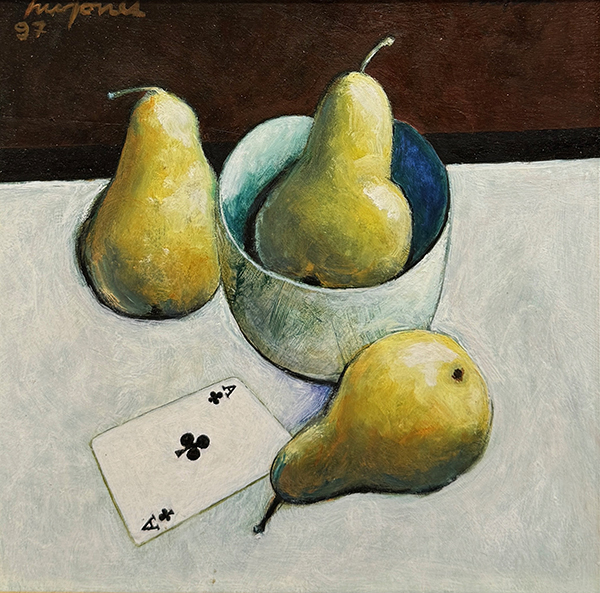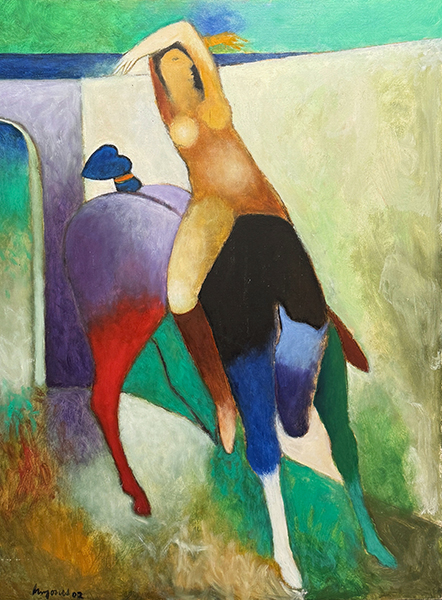Henry Wanton Jones
Henry Wanton Jones (1925-2021) - Biography
Born in Waterloo in the Eastern Townships in 1925, Jones left his family farm in 1947 to study fine arts at Sir George Williams University, now Concordia, for three years, then trained at the School of Art and Design at the Montréal Museum of Fine Arts from 1950 to 1953 where he studied under Arthur Lismer of the Group of Seven, Jacques de Tonnancour, Gordon Webber, and Eldon Grier. Following in the footsteps of his mentors, Jones became a widely respected and beloved teacher, specializing in drawing at the School of Art and Design, sculpture and drawing at Sir George Williams, graphic design at Université du Québec à Montréal, and sculpture at McGill University.
Between 1950, when he joined “Les Rebelles” on the fringes of Salon du Printemps at the Montréal Museum of Fine Arts, and 2002, Jones held 14 solo exhibits and participated in more than 40 group exhibitions. Early accolades included winning the show award at the Winnipeg Art Gallery in 1956, prix de poterie at Expo International in Brussels in 1958, and first prize in the Canadian Group of Painters Exhibition at the Montréal Museum of Fine Arts in 1963.
As the late John Ivor Smith, his contemporary and a fellow sculptor, once said, “In every one of the numerous forms in which [Jones] has worked — jewelery, ceramics, collage, sculpture and, of course, painting — his performance has been that of a virtuoso from the very first.” Jones’ witty, surrealistic, and vibrantly coloured dreamscapes include mysterious still lifes, nude female equestrians, bawdy self-portraits, and masked figures – a fascination sparked while attending a Dia de los Muertos celebration in a small Mexican village in the 1950s. Viewers’ reactions to Jones’s work were rarely indifferent. One of his most controversial pieces is Love/L’Amour, an 11-metre-high, steel-and-fibreglass sculpture weighing 6,500 kilograms, which was installed in 1976 at the shopping mall at Place du Portage in Gatineau. At that time, it was the most expensive public art commission; 45 years later, it continues to fascinate passersby.
In 2017, the Museum of Fine Arts in Sherbrooke sponsored a retrospective devoted to Jones’ work called Démasque that was warmly received by the public – an indication that his unique, artistic voice is waiting to be more widely discovered and appreciated.
Selected Solo Exhibitions:
2017: Démasque (Retrospetive Exhibition), Museum of Fine Arts, Sherbrooke, QC
2006: Masked/Unmasked, Galerie Valentin, Montréal
2003: Drawings & Related Works, Galerie Valentin, Montréal
2003, 1999, 1997: Solo Exhibitions, Gallery Gevik, Toronto
1997: Bau-Xi Gallery, Vancouver, BC
1982 - 1996: Solo Exhibitions, Galerie Kastel, Montreal
1981: Galerie Pierre Larin, St-Sauveur-des Monts, QC
1980: Galerie Excentrique, St-Sauveur-des-Monts, QC
1972: Retrospective, Sir George Williams University, Montreal, QC
1969: Sculptures, Jerrold Morris Gallery, Toronto
1969: Sculptures, Waddington Galleries, Montréal
1962: Galerie d’art Penthouse, Montréal
1959: Exposition itinérante de Régina à Vancouver
1955, 1961: Galerie XII du Musée des Beaux-Arts de Montréal
1953, 1957: Galerie Agnès Lefort, Montréal
Selected Collections:
Musée national des beaux-arts du Québec, Quebec City, QC
Winnipeg Art Gallery, Winnipeg, MB
Musée des beaux-arts de Sherbrooke
McMichael Canadian Art Collection, Kleinburg, ON
The Robert McLaughlin Gallery, Oshawa, ON
Concordia University, Montréal
University of New Brunswick, Fredericton, N.B
Thomas More Institute, Montréal
Loto-Quebec, Montréal
DuPont Canada Inc., Mississauga, ON
Mouvement des caisses Desjardins, Montréal
The Bundy Modern, Waitsfield, Vermont, USA
Artist Specialization: Jones worked in oil on masonite, water-colour and drawings in pen and ink, crayon and pencil; his sculptures are steel, fibreglass and ceramic. His primary subjects of interest the artist were still life, nudes in nature, equestrian studies, trees and vegetation, and whimsical portraiture. His art is surreal, humorous and somewhat spiritual. The three colours of the Mexican flag - red, green and white - appear frequently in his paintings. Eggs, cherries and oranges are repetitive motifs in his still life compositions. His major paintings are inherently sexual, audacious and mysterious.
